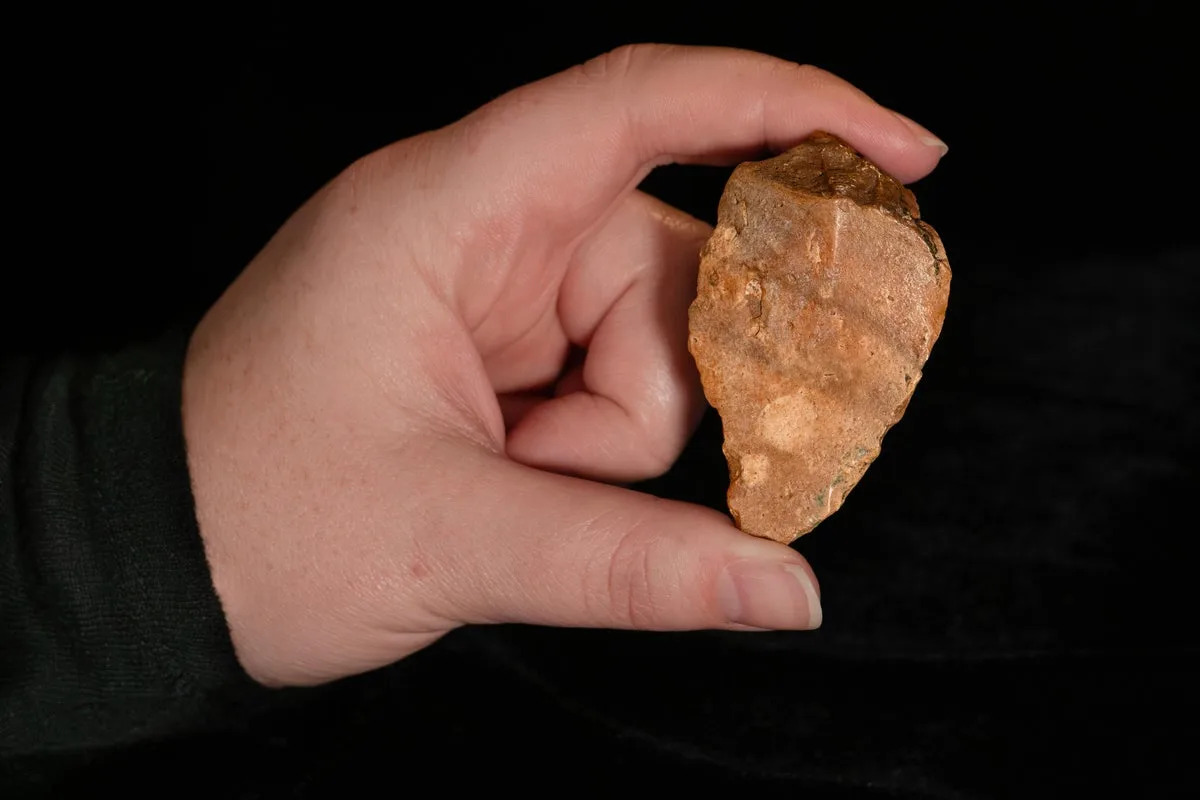World
Ancient Stone Tools on Sulawesi Reveal Evolutionary Insights

Newly discovered stone tools on the Indonesian island of Sulawesi suggest that early humans may have occupied this region far earlier than previously believed. This finding could provide critical insights into the origins of the unique “hobbit” species, Homo floresiensis, which is thought to have evolved from Homo erectus after crossing into Indonesia around one million years ago.
The stone tools, dated to approximately 1.04 million years ago, include sharp-edged fragments crafted from larger pebbles likely sourced from nearby riverbeds. This discovery indicates that the island served as both a tool-making site and a hunting ground for early human populations. Prior research had established that the Wallacea archipelago was occupied from at least 1.02 million years ago, based on findings at Wolo Sege on Flores. The new evidence from Calio suggests that early humans reached Sulawesi even earlier than previously thought, potentially coinciding with their presence on Flores.
Insights into Human Migration and Evolution
According to the study co-author, Adam Brumm, “Sulawesi is a wild card. It is like a mini-continent in itself.” This statement highlights the island’s ecological diversity and its potential role in the migration of ancient human species across the Wallace Line, a biogeographical boundary that separates the unique fauna of Australia and New Guinea from those of Asia.
The implications of these findings extend beyond mere occupation timelines. They raise intriguing questions regarding the evolution of Homo floresiensis. Brumm noted that if hominins were isolated on such an ecologically rich island for a million years, their evolutionary path could differ significantly from that of the Flores hobbits. “Would they have undergone the same evolutionary changes, or would something entirely different have occurred?” he asked.
The Search for Human Identity
Despite these exciting discoveries, the Calio site has yet to yield any hominin fossils, leaving the identity of the tool-makers uncertain. While researchers have established that there were indeed ancient tool-makers on Sulawesi, understanding who they were remains a critical piece of the puzzle.
This research not only enhances our understanding of human migration patterns but also underscores the complexity of human evolution in the region. As excavation efforts continue, the findings from Sulawesi may help to unravel the mysteries surrounding the development of early human species and their adaptations to varied environments.
In summary, the discovery of these ancient tools on Sulawesi provides compelling evidence for early human habitation in the region, potentially reshaping our understanding of how Homo floresiensis and other hominins evolved in isolation. The ongoing study of these artefacts will be crucial in uncovering the full story of human history in Southeast Asia.
-

 Lifestyle5 months ago
Lifestyle5 months agoLibraries Challenge Rising E-Book Costs Amid Growing Demand
-

 Sports4 months ago
Sports4 months agoTyreek Hill Responds to Tua Tagovailoa’s Comments on Team Dynamics
-

 Sports4 months ago
Sports4 months agoLiverpool Secures Agreement to Sign Young Striker Will Wright
-

 Lifestyle4 months ago
Lifestyle4 months agoSave Your Split Tomatoes: Expert Tips for Gardeners
-

 Lifestyle4 months ago
Lifestyle4 months agoPrincess Beatrice’s Daughter Athena Joins Siblings at London Parade
-

 Science4 months ago
Science4 months agoSan Francisco Hosts Unique Contest to Identify “Performative Males”
-

 World4 months ago
World4 months agoWinter Storms Lash New South Wales with Snow, Flood Risks
-

 Science5 months ago
Science5 months agoTrump Administration Moves to Repeal Key Climate Regulation
-

 Business5 months ago
Business5 months agoSoFi Technologies Shares Slip 2% Following Insider Stock Sale
-

 Science5 months ago
Science5 months agoNew Tool Reveals Link Between Horse Coat Condition and Parasites
-

 Sports5 months ago
Sports5 months agoElon Musk Sculpture Travels From Utah to Yosemite National Park
-

 Science5 months ago
Science5 months agoNew Study Confirms Humans Transported Stonehenge Bluestones









